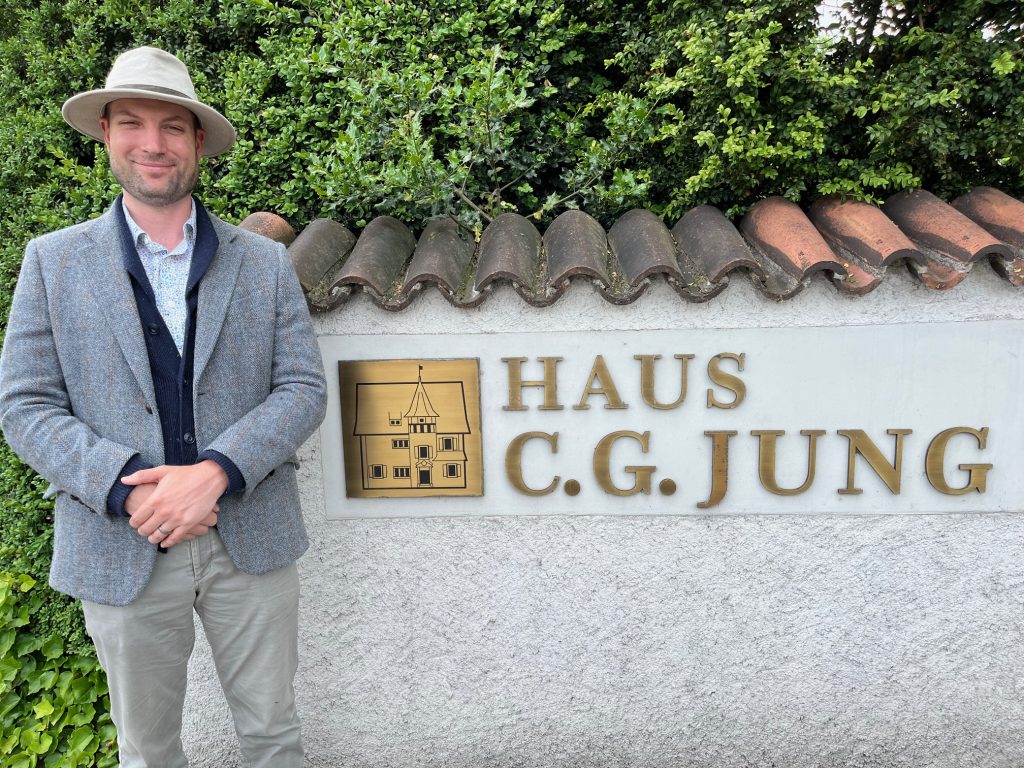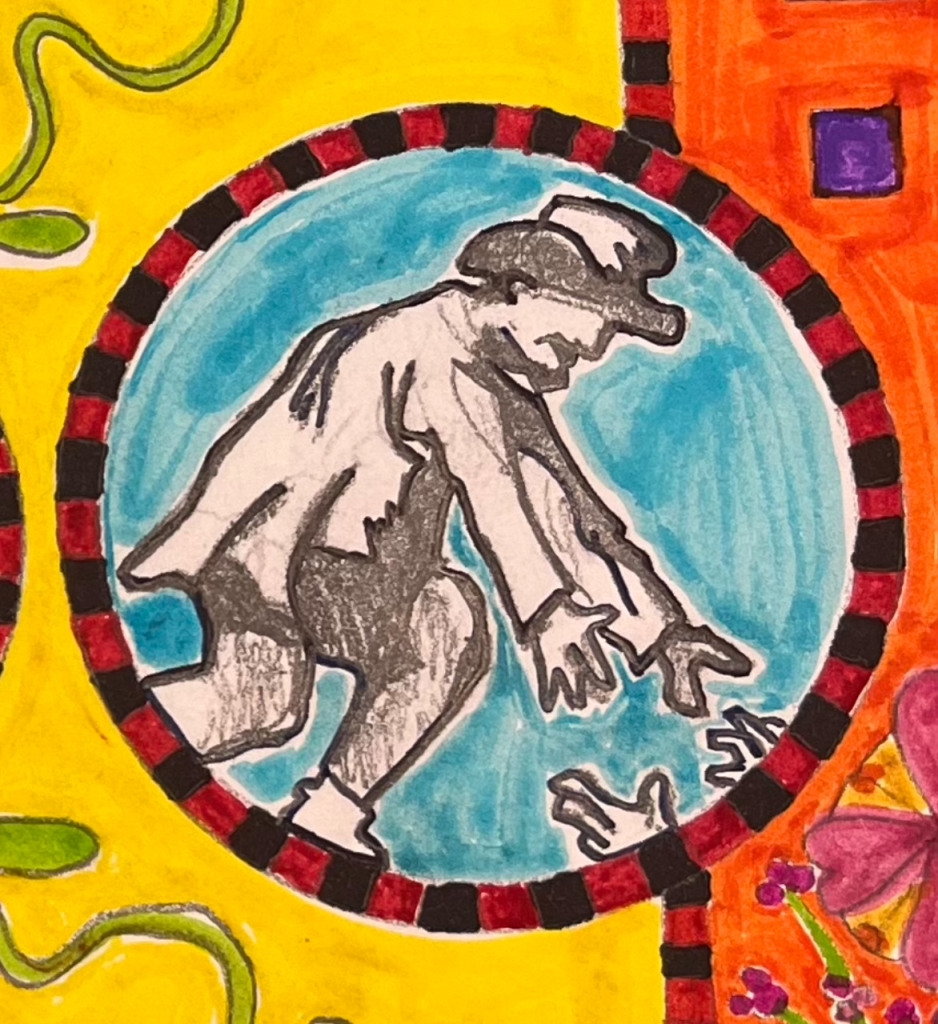by James Mast
Editor’s Note: This reflection was originally published in Conference-Related Ministry Dock Mennonite Academy’s The Lamplighter in Fall 2025 and reprinted with permission.
Why did I go to Zurich?
In some ways, my reasons were probably like the 4,000 other Anabaptists from around the world who made the journey: I wanted to be in the place where our story began. And perhaps, like many of them, I wanted to find myself within that story.
I care deeply about stories. They don’t just describe life—they shape it. The stories we tell—about ourselves, about the world, about God—are the golden road to meaning. And meaning matters. It answers the why of our lives—not just the how or what, but the why.
In the months leading up to my trip, I began to wonder: What is the fundamental Anabaptist story? Is there such a thing? And if so, how can I better understand it—not just for myself, but for my community?
Because if there’s a shared story, then perhaps there’s also a shared psyche—a collective inner-world shaped by that story. And what does that story say about how we face suffering, evil, and death?
Some of us have looked to the Gospels. Others to church history. As a psychotherapist, I brought one more lens: psychoanalysis.
That’s why I spent part of my time in Zurich meeting with Jungian analysts—to explore whether the Anabaptist story could be approached through the deep language of symbol and psyche. Carl Jung, the Swiss psychiatrist who founded this school of thought, took the idea of God more seriously than any other branch of psychology I’ve encountered. One of Jung’s key insights is that symbols are not just created by people—they emerge from people. They carry numinous meaning.

I began asking fellow Mennonites: what images or stories come to mind when you think of our people? Two symbols stood out to me—symbols that I believe speak deeply to the Mennonite soul.
The first is the lamb caught in the briar. The lamb suggests: Innocence, Goodness, Life, Sacrifice, Jesus himself. And the briar? Pain, Entrapment, Helplessness, The inescapability of suffering.

This image feels essential. That which is innocent is caught in something painful. It’s a visual parable of the human condition. No matter how faithfully we live, suffering still finds us. No one is immune to illness, grief, injustice, or betrayal. The question becomes: how do we respond to the thorns?
For Anabaptists, that question isn’t theoretical. The early Anabaptists in Zurich were tortured, drowned, and burned at the stake. The persecution was so thorough that when thousands of us returned to Zurich this year, many residents had never even heard of the Anabaptists.
Out of that trauma emerged another symbol: the Martyrs Mirror. It’s more than a book—it’s a memory vault. A soul-map of suffering and faith. Many people I spoke with named it as one of the defining artifacts of our tradition.
While visiting historic sites—places of exile, execution, and outlawed baptisms—I also met with Dr. Renate Daniel, a Jungian analyst who specializes in interpreting mythic stories. Naturally, we discussed Dirk Willems.

You know the story: Dirk escapes prison across the ice. His pursuer falls through. Dirk turns back to save him—only to be captured again and executed.
When I shared the story, Dr. Daniel paused and said, “Isn’t this also a story of evil triumphing? A good man died.”
That stopped me.
Because yes—it is a story of love and courage. But also… a good man died. Joel Nofziger, director of the Conference-Related Ministry the Mennonite Heritage Center (Harleysville, PA), reminded me that even among the brutal stories in the Martyrs Mirror, Dirk’s story stands out as particularly gruesome.
So, which is it? Evil triumphing, or love triumphing?
The answer, I think, is: both. And perhaps that’s what makes it a true symbol. It doesn’t resolve neatly. It holds paradox.
Fast forward to May 29. Roughly 1,200 Anabaptists gathered in the Grossmünster—the very church where our ancestors were once condemned.
It was emotional. I don’t know if you watched it online, but being there was something else entirely. What moved me most were the acts of reconciliation.
Leaders from the Lutheran, Reformed, and Catholic Churches joined us. Also in attendance were representatives of the local Swiss government. These were the very institutions that once oversaw our people’s deaths. And yet there we were. Together. Praying. Singing. Blessing.
It struck me: 500 years is not that long ago. And like many communities who have suffered atrocities, we haven’t forgotten. But that day wasn’t fueled by resentment. It was fueled by grace.
And maybe—just maybe—that grace is precisely what our symbols have been preparing us for.

The lamb in the briar teaches us that suffering is not proof of failure, nor a reason for vengeance. The Martyrs Mirror tells us that love may cost everything, but it still passes something forward.
These are not just stories of the past. They are the soul-shaping symbols of a people who, even in the face of death, chose peace.
So perhaps it should not surprise us that when we entered the Grossmünster, we did not demand retribution. We offered blessings. Not because we forgot, but because we remembered who we are.
That day, the Grossmünster became a strange, holy place. A glimpse of an upside-down kingdom—the kind of world Jesus imagined. Where peacemaking isn’t weakness, but wisdom. Where history doesn’t trap us but opens us.

James Mast
James Mast is member of Methacton Mennonite Church and an alum of Dock Mennonite Academy (05). His therapy practice is located in Lederach, PA.
Mosaic values two-way communication and encourages our constituents to respond with feedback, questions, or encouragement. To share your thoughts or send a message to the author(s), contact us at communication@mosaicmennonites.org.


